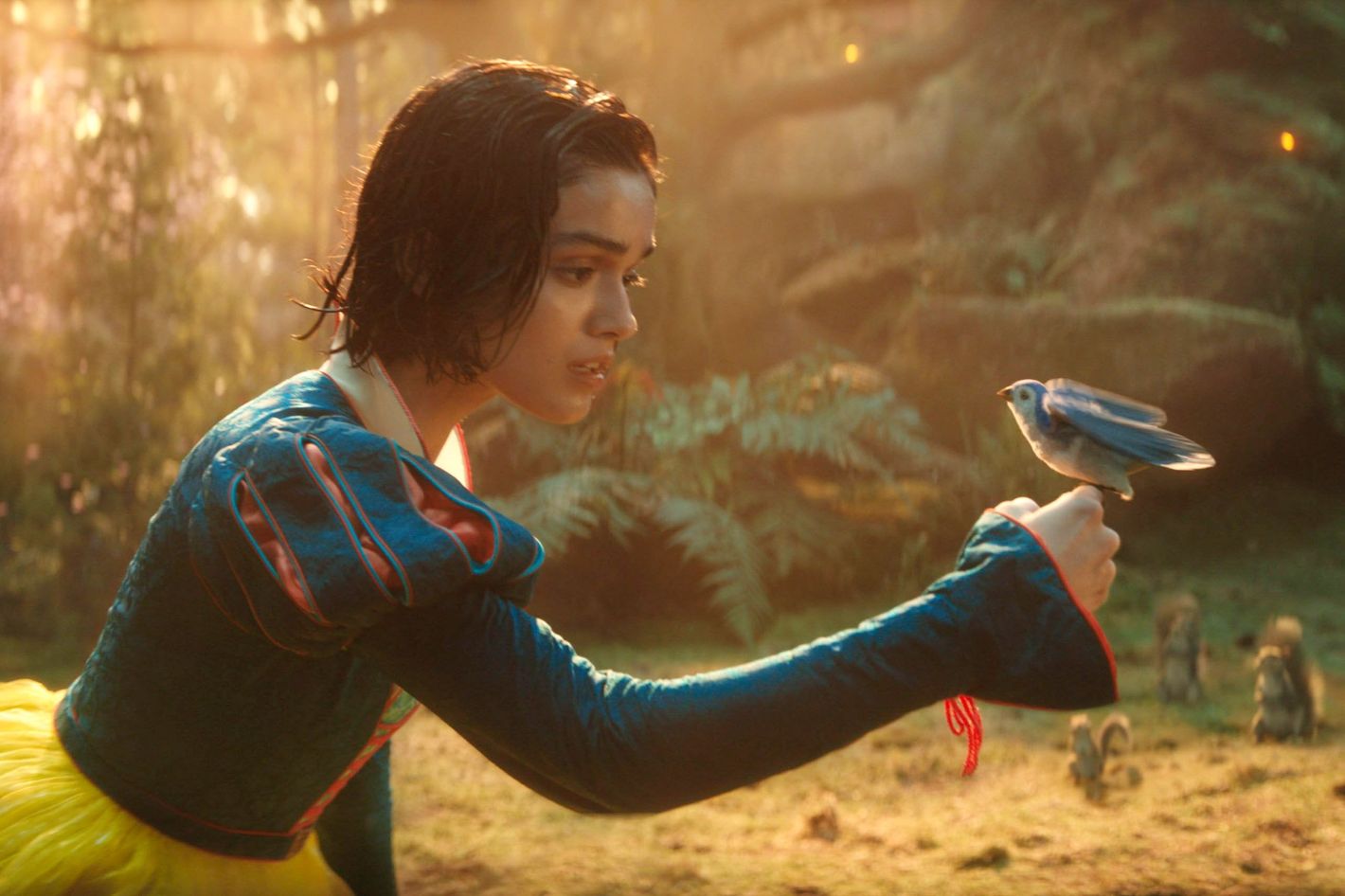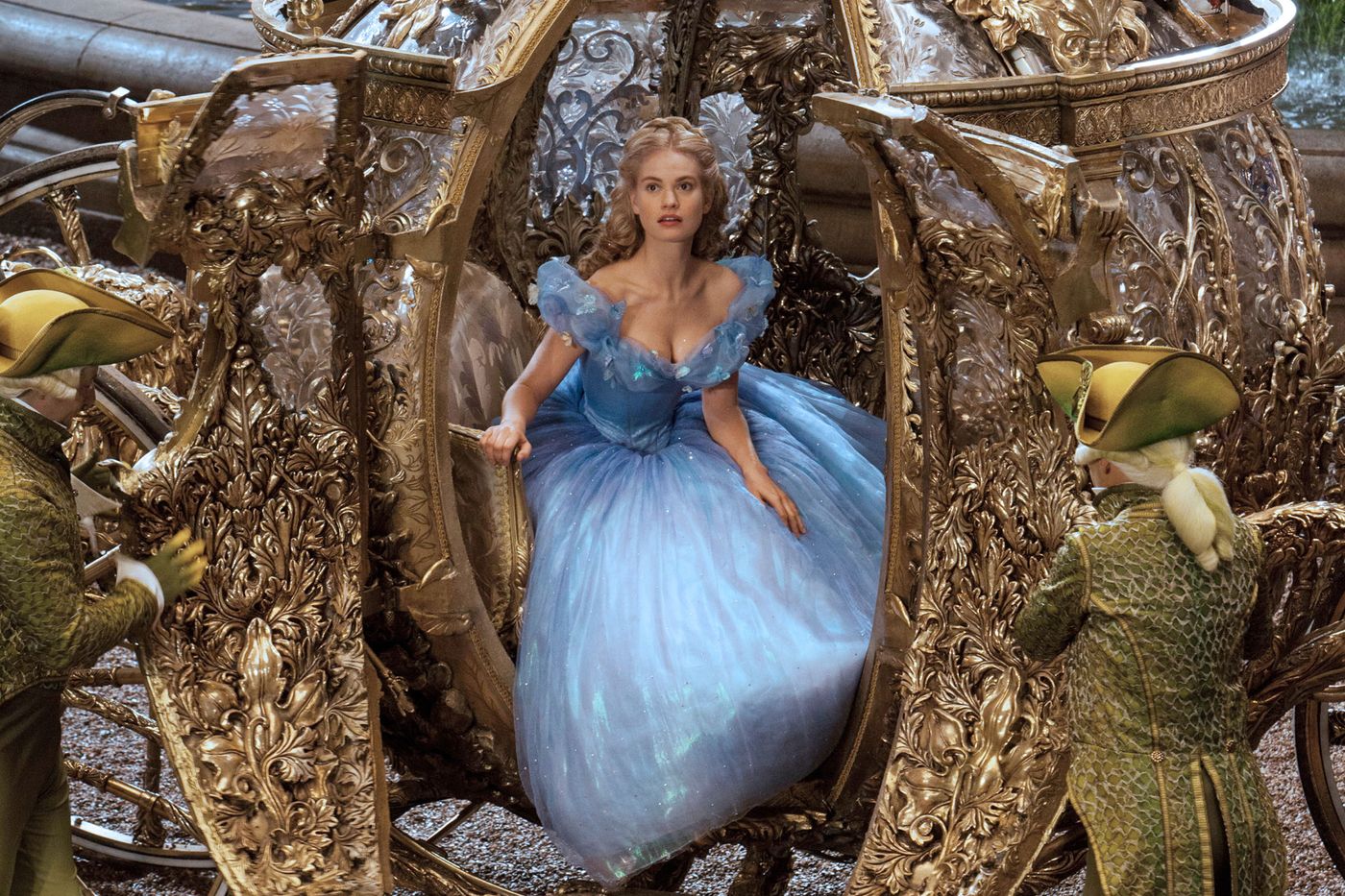Disney’s Live-Action Princess Movies Are Trapped in the 2010s


The first proper industry headline about a new Snow White arrived in October 2016, a wild month in human history to plan anything nine years ahead. Since then, the U.S. has torn itself between progress and retrenchment, smash-cutting from a young Black president to the two oldest white ones. Meanwhile, the biggest studio in Hollywood steadily remade its most legendary animated successes with flesh-and-blood actors.
The new Snow White is either the sixth or the 15th live-action remake of a classic Disney cartoon. The precise number depends on your definition of, well, live-action and remake. You may choose to include various main-character digital animals, a couple of adaptations in which the villains aren’t so evil, or the Glenn Close 101 Dalmatians where no dogs talk. I count none of those! Give me Cinderella, Beauty and the Beast, Aladdin, Mulan, and The Little Mermaid, all apex products of Disney’s Domination Era, the archetypal lineup of the company’s Princess brand brought to big-budget life. These films re-created and hyperinflated their source material, filling expanded run times with prologues and backstory, fitting performers into elaborate costumes designed for two dimensions, and situating human beings into steadily uglier CGI surroundings. Often they added new songs — always terrible, so bad, “Awkwafina is a Rapping Bird” bad. And an astounding number of us bought tickets. 2017’s Beauty and 2019’s Aladdin grossed over a billion dollars. 2023’s Mermaid earned $117 million domestically in one Memorial Day weekend.
Controversy has dogged the past few releases. Mulan disappeared into human-rights scandal and the COVID release haze. Mermaid revealed a miserable subculture of aqua-eugenicists. Snow White’s various alleged offenses somehow involved Israel, Palestine, Donald Trump, and that time Marc Maron interviewed Peter Dinklage. The numbers started going the wrong way. Mermaid grossed half of what Aladdin did. Snow White just saw a $43 million domestic opening weekend, worse than that 2019 Dumbo remake (digital elephant!) nobody will admit to seeing.
The original Snow White was Disney’s original everything: first animated feature, first princess fantasy, first evil stepmother, first himbo prince, first happy working song. The new one marks an ending. There will be more live-action Disney re-creations — Lilo & Stitch arrives in May, Moana next year — but Snow White is the last of the studio’s founding monomyths. And I don’t think any of the remakes, successful or not, have pushed aside the cartoons in the popular imagination. Anecdotally, it seems everyone has seen these movies and (beyond 2015’s fizzy Cinderella) hated them.

Unfortunately, Disney live-action remakes defined the 2010s. Here were decadent yet chintzy nostalgia pieces with delusions of forward momentum. They wanted to fix archaic gender roles, and they wanted to Make Disney Great Again. The princesses aren’t just falling in love; they’re enacting major social reforms and falling in love! The uneasy balance of intentions — re-create famous moments of yesteryear, wedge in vague flavors of resonance — reflects the default tone of corporate progressivism that corporations and progressives both seem tired of now. The live-action Jasmine and Snow White wind up leading their countries, unlike their forebears. Is this progress? What’s more conservative than a literal monarchy? A lunatic online fringe complained about ethnic recasting in Little Mermaid and Snow White, forcing anyone sane to adopt a protective stance. But there’s also something very proto-AI about plugging new young faces into the same old stories.
The Remake Age started with a couple of movies that weren’t remakes at all: 2010’s Alice in Wonderland was a downbeat sequel and 2014’s Maleficent an upside-down Sleeping Beauty. Both were full of CGI sewage, to be clear, but their askew angles on theme-park IP reflected real cynicism around core tenets of the princess narrative. Even Disney, I think, was a little suspicious of Disney at the time. The studio had looked lost in the aughts. DreamWorks became a legitimate animation competitor with 2001’s Shrek, at the time received as a ruthless parody of Michael Eisner’s Mouse House. That wound up inspiring Disney’s own self-satire in Enchanted and The Princess and the Frog and set the stage for the unhappily-ever-after grime of Alice and Maleficent.
Both films made silly money. Meanwhile, however, Disney Animation Studios was refreshed with Tangled and Frozen, which converted folkloric romances into compelling empowerment tales. The princess remakes wound up juggling two countervailing instincts: an instinct for modernization (Ariel can’t be 16 and getting married) mixed with a near-religious fixation on boosting the significance of the original stories (Surely, our princess will inspire the leaders of tomorrow!).
The long-delayed Snow White epitomizes all these trends from two Zeitgeists ago. It’s a museum piece, really, already more archaic than the 1937 production’s roiling blend of cozy sing-along warmth and nightmare Surrealism.
Snow White and the Seven Dwarfs is essentially a perfect movie, and any sane person would admit Snow is the 11th-best character. She is kind and kinda dim. Takes fruit from strangers. Yearns for a man-savior. Speaks with indecipherable baby-helium soprano. She’s still more interesting than her bland prince, who does nothing helpful until he kisses an apparent corpse. The new Snow White badly wants to fix them both. Rachel Zegler’s title character isn’t pining for anything except a major shift in government planning. She wants her citizens to be happy, like back when her perfect parents weren’t dead. Her motto: “Fearless, Fair, Brave, True.” She doesn’t use her animal friends for housework — these cute birds are a battle strategy!! She remembers every farmer’s name, and still her love interest calls her a vapid elitist. He ain’t no prince. Andrew Burnap plays Jonathan, a rebel thief plotting guerrilla operations. They’re allies in the resistance who just so happen to have the hots for each other.

Once upon a time, Disney princesses were hot duds marrying hot duds. In the remakes’ love stories, they flirt mindfully. Lily James’s Cinderella meet-cutes Richard Madden’s prince by teaching him hunting is wrong. Awakened romantically and politically by Cinderella’s bodacious thoughts, the prince opens his next ball to all citizens of every stratosphere. Jonah Hauer-King’s Eric bonds with Halle Bailey’s Ariel over geology and cartography; he also cares about malaria. Mena Massoud’s Aladdin shows Naomi Scott’s Jasmine a whole new world, but most of all, he helps her see the cultural richness of her home city.
“It’s them, the people, they make it beautiful,” the sultan’s daughter says. If I had to pick one overwhelming trend in these remakes, it’s that phrase: the people. Cinderella’s prince demands “A ball for the people!” Sea-Daddy Triton declares, “I have always tried to do what’s best for our people!” Zegler’s Snow White proclaims that she thinks only about “how to help her people.”
I’m not saying adding more politics to fairy tales is a bad idea. The success of Wicked suggests the mainstream picking up where Maleficent left off, and the safest artistic and financial read on 2025 is that audiences actually want more change from their mythic reenactments. You could certainly try to make a Little Mermaid about the perils of isolationism, or a Snow White rebel yell. But you can’t stage a revolution inside the same old theme park. So Zegler’s performance is an effortful muddle because Snow White needs to be strong, smart, brave, upright, politically activated, beautiful outside, and beautiful inside. She needs to do all that while cosplaying the cartoon’s blue-shouldered yellow-billow outfit, and still eat an apple when she obviously shouldn’t.
By struggling to add so many layers to the heroes, the remakes miss the most critical emotional landscapes of Disney house style. When I revisit the old cartoons over my kids’ shoulders, it’s obvious the most vivid personalities are in the ensembles — bighearted little miners, winged godmothers, hungry mice, a fussy crab, the candelabra hot for the feather duster, a transmorphic meta-genie. And the villains, of course, exuding every nastily relatable emotion; the stepmothers and sorceresses are vain, arrogant, dismissive, lonely, rude, and outrageous. Meet the enemy: They’re human.
The remakes overthink and even apologize for their leads: We’re sorry 1992 Jasmine was just a cool tiger owner with no geopolitical aspirations; we promise 2019 Jasmine will be an excellent benevolent despot! In the process, the real estate for the ensemble vanishes. Sebastian no longer battles the French chef. Cinderella’s mice don’t talk. Iago the Parrot — a top-five henchman who had a redemption arc in The Return of Jafar! — is just some parrot.
In the ’37 Snow White, there’s a set piece where the dwarfs yodel. It’s four or five minutes long, each musical solo a bit of Marx Brothers clowning, not a scene with any plot purpose; call it a vibe. It works because the dwarfs are endlessly endearing characters, somehow both ancient and childish. In the new Snow White, the comparable scene lets them sing for a few seconds before segueing into a tuneless duet between the princess and Jonathan. It’s a stale instinct, bizarrely magnifying the central love story more than anything in the cartoon. Who ever wanted to spend more time with the boring boyfriend?

Latest News
For Sale! 2016 Sea Ray 350 Sundancer – $180,000
Reel Deal Yacht is pleased to feature a meticulously maintained 2016 Sea...
4 Trending Collectibles in 2025 That Could Fetch a Fortune
Collectibles: A Fun Alternative Investment in a Volatile Market As the stock...
Hailey Van Lith is grateful for her long, well-traveled college career after it ends in Elite Eight
Hailey Van Lith got a text from her dad hours before TCU...
Madison Booker helps Texas reach its first women’s Final Four since 2003 with 58-47 win over TCU
Rori Harmon put her hands on her knees and bowed her head...
Betting favorite UConn joins 3 top seeds in South Carolina, UCLA and Texas in women’s Final Four
The women’s Final Four is full of star players, top seeds and...














Leave a comment